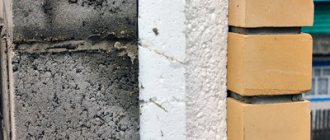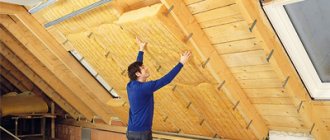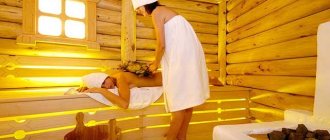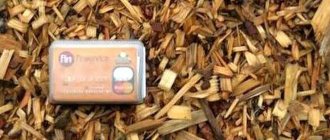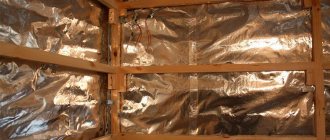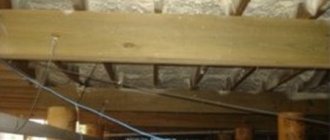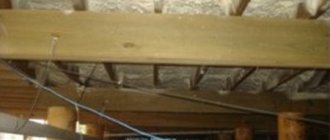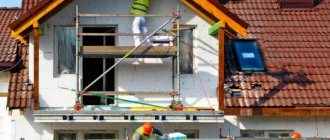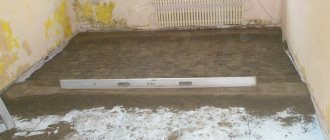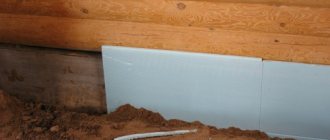Construction and repair
Having decided to install a bathhouse on their home or garden plot, its future owners think about what building materials to purchase. Everyone would like it to be warm, environmentally friendly, and last a long time. But at the same time, it is desirable that its construction should be inexpensive.
If the goal is to build a bathhouse without significant costs, it is worth considering the option of constructing it from expanded clay concrete blocks. A detailed description of the construction and laying of the foundation for a bathhouse can be found on the website of the Cheboksary Construction Plant - the largest manufacturer of expanded clay concrete blocks in Chuvashia, with a representative office in Nizhny Novgorod.
Advantages of a bathhouse made of expanded clay concrete blocks
High speed of construction. Due to the large size of the blocks, it will be possible to erect the building frame quickly. The walls are smooth, they do not need to be leveled before finishing. The building has a long service life.
It will last for at least 35 - 50 years. Low price for building materials. Easy installation. Even a non-professional can handle the construction of the frame. Environmental friendliness. The blocks contain no hazardous elements. Mold and fungal formations do not appear on the walls. Fire safety, the blocks are assigned a non-flammability class of A1.
Kinds
There are dozens of types of insulation on the market, but for a bath you can only use those that:
- safe in environmental and sanitary terms;
- excellent resistance to moisture;
- prevent bacteria and fungi from multiplying;
- maintain a stable shape for many years;
- and, of course, provide maximum heat retention.
Insulation with stone wool turns out to be the most effective solution, because no other material can provide such low thermal conductivity. Organic insulation materials have a long history of use and are undeniably safe. Shavings and sawdust, felt and flax tow do not exhaust their variety. Modern industry has long established the production of slabs based on reeds, shavings or peat.
Even an old wooden bathhouse can be insulated with polymer substances. So, polystyrene foam is excellent for ceilings; it can withstand contact with moisture and high temperatures well. Mechanical processing of various types of foam is very easy. Foam glass is most often used on the most problematic surfaces, when it is difficult to secure anything else.
Problems may be related to the chemical composition - with significant heating, the release of toxic substances begins.
These materials are suitable for cinder block, expanded clay concrete, and brick baths. They are not damaged by rodents, and installing the required layer is very simple.
Glass wool is even easier to install, but is not as resistant to high temperatures.
Foil ready-made insulation is placed mainly on the ceiling and prevents the most important thing in it from leaving the steam room, that is, infrared rays
In order to insulate a chopped bathhouse, various types of moss, hemp and jute have been used for centuries. But each type of such fiber causes a stir among birds and insects. The solution was found in combining them. The result is achieved due to the fact that the combined material is not recognized by animals as something familiar and is not pulled apart.
A bathhouse made of blocks needs to be insulated differently than buildings made of logs. The preferred solutions are fiberglass and mineral wool. Regardless of the type of insulation used and the main structures, careful vapor barrier is required.
A wooden sheathing must be installed on top of the cinder block, gas block or gas silicate blocks. Without it, no structures or insulation materials will stick to the surface.
The same approach in block construction is applied to finishing the ceiling. If fiberglass is used, it is strictly forbidden to cover both sides with foil. Otherwise, the passage of air and moist steam out will be disrupted.
A brick bathhouse is sometimes insulated with penoplex. But it only requires internal thermal insulation; there should be no finishing layers on the outside - this will only cause cost overruns on heating the masonry.
Concerns of future owners
When choosing a building material, people are afraid that a bathhouse made of expanded clay concrete will turn out cold.
But with proper thermal insulation, its rooms will retain heat well. You just need to choose insulation materials that are resistant to moisture and high temperatures. It is necessary that they are resistant to dampness and mold does not form in them.
Any structure must be strong, but will an expanded clay concrete building be strong?
To increase the reliability of the building, it is necessary to reinforce the masonry. The reinforcement is placed in gutters, which must be made in the upper part of the block. It is possible to lay it in a mortar joint if it is large and its dimensions are sufficient for laying a metal rod in it.
Wall thickness
Whether the bathhouse will be used all year round and how strong the winter frosts are are the main factors that determine the thickness of the building wall at which the stove will not heat the street. You will have to decide on the thickness at the stage of laying the foundation (creating a grillage).
You can rely on the results of calculating heat losses depending on the climate, or you can build on the size of the building material and the experience of your neighbors. Expanded clay concrete blocks, molded according to GOST, have a length of 390 mm. A proportionate width of the load-bearing part of the bathhouse is usually sufficient for central Russia. Insulation, plaster, and facade material will be added.
The width of the block is equal to half its length minus the reserve for masonry material (a length of 39 cm, for example, corresponds to a width of 19 cm). This makes it possible to alternate rows with different directions of blocks:
- long sides facing each other;
- in two layers - with long edges parallel to the plane of the wall.
In total, the “pie” of the wall will be approximately half a meter thick (or more, depending on the chosen cladding and additional insulation).
Owners of summer baths and residents of the southern regions of the country often have walls half a block thick (in one layer, with short edges facing each other).
Construction Features
A building made of expanded clay concrete does not require a solid foundation. Its frame weighs little.
Therefore, you can get by with a strip base. This will simplify and reduce the cost of building construction. To increase the strength of the foundation, it should be reinforced.
External walls must be protected from atmospheric precipitation by plaster and then painted with acrylic paint. This will prevent them from coming into contact with moisture.
The insulation is installed on the inside of the wall.
A suitable option is basalt wool. This is safe and durable thermal insulation. A vapor barrier is installed on top of the basalt wool.
After insulating the bathhouse, you can begin to decorate its interior. Plastic panels or lining can be used for this. Wood finishing will create the appearance that the bathhouse is built of wood.
Video description
They tell you more about insulating baths in this video:
Features of external decoration
In order for the finished structure to acquire an aesthetically attractive appearance, the external walls should be finished. For this, as a rule, various materials are used that have not only decorative, but also protective functions. Quite often, preference is given to clinker panels, special facing bricks, plaster, which is then coated with paint, and hanging facades. These materials are beautiful and affordable.
One of the inexpensive cladding options is cement plastering. For it you need to prepare a solution of cement and sand in a ratio of 1:4. The mixture is applied in one layer, and then grouted, so that the result is a smooth surface with a uniform shade. To make the walls look even more attractive, it is recommended that a day after the plaster has dried, cover them with another layer of mortar and rub it in. At the end everything is covered with paint.
Painting as an exterior finishing option
Comparison of buildings made of expanded clay concrete and wood
Many people still believe that the best baths are those built from timber. Wood has long been the most popular material for their construction. But it has disadvantages:
it darkens over time, which deteriorates the appearance of the structure; wood requires regular treatment with antiseptics.
If this is not done, it will begin to deteriorate, mold will form on it, dangerous microorganisms will grow inside the logs; wooden construction requires mandatory shrinkage, which lasts 1 - 3 years. During this time, finishing work cannot be carried out; when constructing a building from logs, serious caulking of the walls is required. This is due to the fact that the logs are in contact with each other over a small area.
A bathhouse made of expanded clay concrete is free from these disadvantages. Therefore, it is a more practical option than wood.
A bathhouse made of blocks is durable, after construction it does not require shrinkage, you can immediately begin finishing it. During operation, the building will not require additional treatment with protective substances. You will only need to monitor the condition of the exterior finishing of the building so that it always looks beautiful and neat.
09/04/2017 Alexey Koshkin
Traditionally, it is believed that a bathhouse should be built from wood - a natural, breathable material that has a beneficial effect on health. However, this is not always possible for one reason or another, and a bathhouse made of expanded clay concrete blocks can be an excellent alternative.
What are the advantages of the material:
Non-toxic.
The manufacturing technology and initial components (clay, cement, sand) are environmentally friendly. Of course, if you purchase the material from a trusted manufacturer. A bathhouse made of expanded clay concrete blocks perfectly resists moisture. The high rate of thermal insulation leads to low consumption of funds for insulating the building. The relative lightness of the blocks does not require the use of special devices and hired labor. You can do everything yourself!
Construction usually begins with the foundation. The light weight of the proposed structure will not require a solid foundation; you can get by with a simplified version. If you plan to do everything yourself, then a strip foundation is suitable, on which a bathhouse made of expanded clay concrete blocks will stand reliably for many years.
Concrete is suitable grade M250. Call us (phone: 8 (846) 30-20-555) in one day we will deliver you concrete of any brand. There are mixers for 7m³ and 9m³.
Additional strength is achieved through reinforcement every two rows. For this, a special reinforcing mesh is used.
Waterproofing material is placed on the finished strip foundation in 2 layers. In this case, ordinary roofing material is perfect. Then a reinforcing mesh is installed on top of it, and then a mortar for construction.
In the future, the construction of a bathhouse from expanded clay concrete blocks is no different in terms of the technological process from the construction of a bathhouse from other materials. You just need to check that the first row is exactly horizontal (an error will lead to cracking of the walls in the future). Then each subsequent row is placed using a bandage.
In a bathhouse made of expanded clay concrete blocks there must be good ventilation. It cannot be completely covered when decoratively treating the surface of the walls. Therefore, tiles must be used on the inside of the washing compartment.
We save heat in the bathhouse. If the bathhouse is supposed to be heated only from time to time in winter, we recommend that it be lined with insulation from the inside.
A bathhouse made of expanded clay concrete blocks is not inferior in quality to a bathhouse made of other materials. At the same time, it is easier to construct and lasts longer than wood.
Come and together we will build you a bathhouse! The address of the enterprise and directions can be found in the CONTACTS section of our website.
Few Russian people will deny themselves the pleasure of taking a steam bath, especially considering that this is not only a pleasant and relaxing procedure, but also an excellent therapeutic and health remedy for many diseases. That is why every happy owner of a site for individual construction or a summer cottage tries, first of all, to build a bathhouse on it - a small “paradise” corner for himself, his family and friends, to enjoy, relax, warm up and heal... Contents: Why insulate a bathhouse from blocks ?Insulation of a bathhouse From expanded clay concrete blocks From cinder blocks From gas silicate blocks.
Is it worth it? Often, such a health corner is built not only together with the main structure, but even before it. Until recently, the issue of choosing building materials for this was decided unequivocally - only wood. It is an ideal material for a bath: it has low thermal conductivity and high heat capacity, is hygroscopic, air-moisture and vapor-permeable. But wood also has a number of disadvantages, which largely manifest themselves in conditions of high temperatures and humidity, characteristic of bathhouses - it is a fire hazard, susceptible to rotting and fungus.
Stage #3 - finishing the steam room and washing room
The “pie” of insulation in the steam room and washing room was chosen as follows: basalt wool, Izospan FB vapor barrier, 2 cm ventilation gap, lining.
To begin with, 50x40 mm bars were sewn vertically onto the walls in increments of 50 cm. For fastening to the walls, ordinary dowels were used. Expanded clay blocks, in my opinion, hold firmly any type of fastening. The width of the bars must match the width of the insulation. In my case it is 50 mm.
After fixing all the bars, basalt wool S=50mm was tightly placed in the spaces between them.
Basalt wool is laid between the lathing slats
Izospan FB, a vapor barrier membrane on kraft paper, trimmed with foil, was sewn onto the top of the bars using a stapler. This vapor barrier is not cheap, but it increases the insulating properties of the entire “pie” of the inner lining, thanks to the foil coating. The main thing when installing a vapor barrier is to strive for complete tightness of the layer. To do this, it is necessary to secure the Izospan FB sheets with an overlap, and carefully glue the seams with aluminum tape. Scotch tape is also placed over the staples from the stapler.
Izospan FB vapor barrier membrane sheets are mounted on sheathing slats
It is advisable to create a ventilation gap between the vapor barrier and the lining. Some bath attendants ignore it, but it’s still better to be safe. A sufficient thickness of the gap is 2 cm. To do this, I placed a counter-lattice made of slats 2 cm thick on top of the vapor barrier (along the existing bars).
Aspen lining is sewn along the slats, painted with a special impregnation for wooden bath surfaces - Supi Saunasuoja (Tikkurila). This acrylate-based impregnation protects wood from fungus, mold and blue stains. After painting, the lining acquires a light matte shine.
Steam room walls lined with aspen clapboard
Why insulate a bathhouse made of blocks?
Today, the modern market offers the widest selection of building materials from brick and concrete to the recently extremely popular block materials, such as expanded clay concrete, gas silicate, cinder blocks and many others. They:
- functional; retain heat well; hygroscopic and resistant to temperature influences; allow you to quickly erect any structure.
In a word, they are a fairly convenient building material with good characteristics.
However, their thermal insulation properties, although better than those of traditional brick and concrete, are still significantly inferior to wood, so buildings made from such blocks, especially if they are used in winter, need insulation, and this applies primarily to bathhouses.
Insulating a bathhouse from blocks is a process that requires calculation and an integrated approach:
For residential buildings, external insulation is considered the main and most effective, which allows, by moving the point of negative temperatures from the wall material outside, to significantly reduce heat loss, increase the overall efficiency of the heating system, and protect walls from rapid destruction. Internal thermal insulation is used in them as an auxiliary measure that further increases the thermal protection of homes. In contrast, internal insulation is most suitable for bathhouses. The baths are used sporadically, usually no more than one day a week, remaining unheated the rest of the time.
The main task of insulating a bathhouse is to keep the rooms warm only during its use. Under these conditions, external thermal insulation practically does not protect walls from freezing and loses its effectiveness, and periodic temperature changes quickly destroy wall building materials. Stone and block materials heat up in a bathhouse much more than wood, increasing the risk of burns, so such bathhouses are usually lined with wooden facing materials: clapboard, block house.
This measure provides a convenient opportunity to place a layer of thermal insulation material under the casing. And even with well-made internal thermal insulation, which effectively protects the walls from high temperatures, external insulation, which reduces the risk of severe freezing, will not hurt. In addition to insulating the walls, through which up to 60% of heat loss occurs, good thermal insulation of the ceiling, floors and foundation will help reduce the remaining 40%.
Installation of thermal protection from outside
Scheme for insulating the floor of a bathhouse made of expanded clay.
For external thermal protection of a bathhouse made of blocks, in order to remove moisture from the walls, you can use polystyrene foam (vapor-permeable grades). To work you will need tools:
- putty knife;
- level;
- drill;
- hammer.
Materials:
- expanded polystyrene boards;
- glue;
- polyurethane foam;
- dowels;
- reinforcing mesh.
Perform the work in the following sequence:
Scheme of external insulation of a bathhouse with expanded polystyrene slabs.
- Apply glue to the cleaned walls, starting from the bottom, with a spatula (for 1 slab).
- The plate is applied to a layer of glue and pressed against the wall.
- The slabs of the 1st row are attached (by level), the joints are carefully coated with glue.
- Attach the top rows, avoiding overlapping seams.
- The slabs are mounted end-to-end at the corners, and the cracks are filled with foam.
- After the glue has dried, the slabs are fixed by attaching them to the wall (in the corners and in the center) with dowels.
- Reinforcement is carried out by laying the mesh on top of polystyrene foam with glue, and overlaps are made at the corners.
Now the surface can be plastered and painted.
To insulate the bath structure from the outside, you can use polyurethane foam spraying technology. For work you will need spraying equipment and polyurethane foam. First, the walls of the bathhouse are cleaned of dirt. Then, using equipment, a layer of polymer (15 mm) is applied, avoiding gaps. After waiting a minute, repeat the spraying operation. After the polymer foam has hardened, the irregularities are cut off with a knife. Next, the surface of the material can be primed, plastered and veneered.
To better retain heat, it is necessary to insulate the ceiling of the building using expanded clay or other non-combustible material, and also insulate the doors.
A properly insulated room allows you to save fuel and energy. This bathhouse can be used all year round.
Made from expanded clay concrete blocks
Expanded clay concrete blocks are produced on a vibrating press followed by steaming, so they have a fairly porous structure, which determines their increased moisture capacity. Bathrooms are constantly exposed to moisture and water vapor, and expanded clay concrete blocks become saturated with them, which significantly worsens their heat-shielding properties. At the same time, constant temperature fluctuations will quickly destroy the structure of the blocks, increasing the possibility of heat loss through the walls.
How to insulate a bathhouse made from such blocks? Measures for insulating a bathhouse made of blocks can be divided into several stages:
Insulation of the steam room.
The most extensive thermal protection measures are required here. As mentioned above, block walls tend to freeze when rooms are occasionally heated. Heating a bathhouse with frozen walls requires high fuel consumption and a long period of time.
Therefore, only comprehensive internal and external thermal insulation can give the best result. From the inside, both thermal insulation and good vapor and waterproofing should be provided. If in a residential building the task is to remove excess steam and the insulation must have good vapor transmission, then in a steam room the opposite is true. Foamed polymers such as polystyrene foam or polyurethane foam cannot be used for the main insulation of a steam room.
When exposed to high temperatures, they release toxic styrene. Mineral wool boards are best suited. However, mineral wool absorbs water very well, so it should be covered with a layer of vapor barrier on top. For vapor barrier, you should not use plastic film - aluminum foil or kraft paper is better.
The best option would be to use foil plastic, such as Penofol, for example. It will reflect thermal radiation well, preventing it from reaching the walls, and retain water vapor. The ceiling of the steam room should be especially well protected, because hot air and steam collecting at the top will, if there is the slightest leak, quickly “leave”, quickly reducing the temperature. Washing room. Here, the indoor thermal conditions do not reach extreme values, but the humidity still remains quite high.
Therefore, protective measures must be applied almost the same. In the washing room, you need to take care of good thermal protection of the floor, since the slightest gap will cause cold air to leak from below, quickly reducing the temperature in the room. But at the same time, it is necessary to ensure effective drainage of water from the floor.
To do this, you can use the principle of a water-locked siphon, as in a bath, which will prevent the entry of outside air. Dressing room. Here, measures to maintain a comfortable temperature will be sufficient. Polymer materials can already be used to insulate walls.
For external thermal protection of a building, any effective modern thermal insulation materials can be used. A very good effect is achieved by sprayed polyurethane foam, which creates a monolithic thermal insulation layer on the surface of the walls and foundation, which does not create “cold bridges” and has minimal heat loss.
On top you can mount cladding from wall decorative materials: lining, block house, siding or facade panels. A good option for external insulation is “warm” plaster. There are also good reviews about such a new material as liquid ceramic insulation.
How to insulate a cinder block bathhouse? Cinder blocks are similar in manufacturing technology and in their main characteristics to expanded clay concrete, only instead of expanded clay granules they usually use waste from the metallurgical industry, which determines their low cost. In addition, they have a wider range of overall dimensions, due to the fact that the ease of production allows them to be made even at home.
In addition to traditional slag, other waste from various industries can be used in the production of such blocks. The raw materials used in production determine the thermal conductivity characteristics of these blocks, which can be in a very wide range.
Otherwise, measures for insulating a bathhouse built from cinder blocks do not differ from expanded clay concrete blocks.
Unlike sand-lime brick, produced by pressing a lime-sand mixture, blocks are produced by sintering in an autoclave, so the technical characteristics of these materials are different.
Gas silicate is similar to aerated concrete, only the latter uses cement instead of lime. The thermal insulation properties of gas silicate blocks are determined by their brand:
- over D800 - structural: good strength, low thermal insulation; D500-D800 - structural and thermal insulation: average values for both parameters; D300-D500 - heat-protective: low strength, high thermal insulation.
Gas silicate blocks are extremely hygroscopic, therefore they require the most effective waterproofing, especially when used in bathhouse construction. In addition, they also have rather low heat resistance, so they should be protected from high temperatures.
It must be said that this material is the least suitable for the construction of baths, since it requires the most effective measures for hydro‑ and thermal insulation. Its use can only be justified by a significantly lower price, but this is not the case everywhere. In addition, additional protection measures not only eat up cost savings, but even increase costs.
The construction of a bathhouse on a country site is always a priority over other buildings.
And more often than not, the house is still under construction, and water procedures are already being performed in the bathhouse. This building plays such an important role among Russians. Today, bathhouses are built from different materials: logs, bricks, expanded clay concrete blocks, cinder blocks, cellular concrete blocks.
But, as practice shows, a building made of any material must be insulated. For example, a bathhouse made of expanded clay concrete blocks.
This material has excellent thermal insulation qualities. And still, experts recommend even insulation for him. How it's done?
Execution of work
Objects made of expanded clay material have a porous structure and can perfectly retain heat, preventing moisture from accumulating in the material.
Wall insulation
To insulate expanded clay concrete walls from the inside, you should install a sheathing of wooden slats, the thickness of which will be five centimeters. A layer of insulating material chosen by you is applied to it. To ensure reliable waterproofing, the insulation material is completely covered with aluminum foil.
To insulate a bathhouse more efficiently, experienced builders advise using a vapor barrier layer made of foamed polypropylene with a foil coating. This material can withstand temperatures of one and a half hundred degrees. If such protection is not enough, mineralized wool can be additionally laid between the walls and the vapor barrier layer.
The insulation of walls made of expanded clay concrete blocks from the inside is completed by the installation of finishing materials. For this you can use wood paneling and other products.
Floor insulation
It is worth emphasizing that it is from this element that the internal insulation of the bathhouse begins. On the base of the soil, a layer of expanded clay stone, slag or glass wool is arranged. Its thickness must be at least thirty-five centimeters so that the heat is retained inside the building. A screed of expanded clay concrete with a reinforced layer is placed on top of the insulating material, then you can make a finished floor from ceramic tiles or regular boards.
If the floor is filled with concrete, then the following work is performed to insulate it:
- First, a waterproofing layer is placed on the concrete base. Here it is allowed to use both roll and coating materials;
- on top of such a layer is laid polystyrene foam, expanded clay stone or mineralized wool. The thickness of the layer is determined based on the material used;
- plastic stands are placed on top to create a gap for ventilation;
- Reinforced mesh material is attached to such stands, and a screed of concrete mixture is placed on top;
- All that remains is to arrange the finishing floor. The choice of materials is yours.
The wooden floor is insulated as follows:
- First, a rough board flooring is installed;
- its surface is covered with a vapor-proof waterproofing material. The film is laid out around the perimeter so that it extends fifteen to twenty centimeters onto the walls. It is fastened with a stapler, the joining areas are glued with double-sided tape
- after that we lay out the insulation, cover it with a waterproofing layer of film or roofing felt;
- The work is completed by arranging the subfloor.
Ceiling insulation
The insulation of the ceiling is of no small importance. This need is explained by the fact that it operates in almost extreme conditions - on the one hand it is hot, on the other it is cold
To retain heat inside the bathhouse, the ceiling can be insulated in one of two known ways:
- closed;
- open.
The second option is used for baths that do not have a floor in the attic. For this purpose, a layer of loose material is poured onto the ceiling structure, covered with a waterproofing layer. The minimum backfill thickness is twenty-five centimeters. Expanded clay is perfect for this. A waterproofing layer is again applied on top. In this case, you can use roofing felt or polyethylene, strengthening it with a construction stapler.
There is an old method of arranging an open insulation layer. Instead of waterproofing material, a layer of clay mixed with sawdust is laid out. Its thickness must be at least four centimeters. After complete drying, it is sprinkled with soil and dry oak leaves.
The closed method is in most cases used for baths with an attic floor. The flooring of the structure is fixed using joists. Below it, the following materials are laid out one after another:
- vapor barrier membrane;
- basalt wool for insulation;
- roofing felt as a waterproofing layer.
Advantages of using expanded clay blocks in construction
This material has a lot of advantages:
- it is an environmentally friendly and non-toxic material;
- moisture absorption is minimal and is not destroyed by exposure to steam and liquid;
- excellent thermal insulation qualities that contribute to the conservation of thermal energy indoors;
- light weight.
In order to efficiently insulate a building made of such material from the inside, it is recommended to take into account the design features of the object and the influence of climatic conditions on its elements.
Selecting a thermal insulator
Before you start insulating, you need to choose the insulation itself. In principle, there are no special restrictions in this regard. And if earlier this issue was serious, then with the advent of vapor barrier materials, it has exhausted itself.
Therefore, choose any, although a reasonable approach is the choice of material with an optimal price-quality ratio. Eg:
- Mineral wool. Polystyrene foam boards. Glass wool. Insulation based on other polymers.
Let's take mineral wool and use it to show how to insulate a bathhouse made of expanded clay concrete blocks. Again, we remind you that the process will be carried out internally.
Thermal calculation
When purchasing blocks, the manufacturer must always indicate their properties. The calculation determines the thickness; to perform it, a characteristic such as thermal conductivity will be required. There are two ways to perform this calculation:
- "manually";
- using special programs.
It is not difficult to perform an independent calculation, but for a person who does not have a construction education, it can cause difficulties. It is best to use the simple Teremok program, which works in two modes:
- calculating the thickness of one of the layers of the wall structure;
- checking the heat transfer resistance if the thickness has already been selected.
To work with the software, you will need the following initial data:
- thermal conductivity of expanded clay concrete blocks;
- block width;
- thermal conductivity of insulation;
- insulation thickness (not needed if working with the program in the first mode).
Having selected the values, you can begin insulating the walls of the house.
Insulation
Mineral wool can only be installed on walls using lathing. Therefore, to do this, it is necessary to install vertical racks directly along the wall and secure them to it with self-tapping screws. Wooden beams with a cross section of 50x50 mm are usually chosen as vertical posts. The distance between the sheathing elements should be slightly less than the width of the mineral wool mat.
The insulation must enter the space between the slats, pressing tightly against the slats. However, it should not extend beyond the edges of the sheathing. That is, its thickness should be 50 mm.
Advice! All wooden products must be treated with an antiseptic composition before installation. A bathhouse is a humid room, and although the entire thermal insulation cake will be reliably protected by a vapor barrier, you need to be on the safe side. As they say, God protects those who are careful.
So, the insulation has been installed, now you need to cover it with a vapor barrier. For this you can use different materials. There are special membranes made of polyethylene on the market, and there is foamed polyethylene itself, covered with a foil layer.
There are many materials, you can use any in the bathhouse. The most important thing here is to install the vapor barrier in such a way that there are no gaps between the edges of its strips. Therefore, the strips are laid overlapping each other by 10-15 cm. The joint is also additionally covered with a special foil self-adhesive tape.
And the last stage is finishing the bathhouse from the inside. Most often, lining is used as a finishing material. It is stuffed horizontally directly along the installed sheathing.
Please note that this material has a tongue and groove connection. So the panels should be positioned so that the groove always faces down. Thus, the problem of moisture accumulation inside the lock joint is solved.
What are the consequences of lack of thermal insulation?
Since cinder blocks contain sawdust and expanded clay, some building owners mistakenly believe that this material does not need insulation. But if this is not done, there will be the following consequences for the structure:
- Cold walls and floor. This is especially true in windy regions where winters are frosty.
Heat loss directly affects the heating of the room. The cost of maintaining the building will increase.In addition, it will simply be uncomfortable to be inside; the cold floor is dangerous to the health of the residents.
- Increased humidity. During periods of frost, condensation will appear on the walls, which will accumulate in small puddles and wash away the building materials. Despite the fact that cinder block is not a favorable environment for the growth of mold or mildew, finishing materials are not. There is a high probability of microorganisms appearing, which is dangerous for people.
- Penetration of moisture destroys the cement in the cinder blocks. The building material collapses, gradually crumbles, and cracks appear. The result may be the destruction of the wall.
- There is a danger for finishing materials inside the house, many of which are not designed to withstand temperature changes and can burst (glass, plastic), collapse, or deteriorate.
To avoid repeated repairs or irreversible consequences for the walls of a cinder block building, it is necessary to insulate it.
Main performance characteristics
In order to produce high-quality expanded clay concrete, manufacturers use a special binder cement, as well as filler, which is presented in the form of inorganic gravel. In order for the finished product to have certain characteristics, the composition may include various mixtures (for example, in the construction industry there are additives that help to entrain air to create universal closed pores).
When a novice master decides to build a bathhouse from expanded clay blocks with his own hands, he must understand that the material may contain expanded clay of different fractions. The cement mortar used around the blocks can have a dense structure if it contains sand, or a porous structure.
When liquid cement does not fill all the free space between the building material, but only envelops it, then in the end you can get a universal expanded clay concrete with a large-porous structure. It is worth noting that during the construction of the bathhouse, care must be taken to ensure that no through pores are formed. For a standard block, a polished and granular surface that exactly follows the shape of the aggregate grains is most suitable.
Special attention should be paid to the numerous advantages of this material:
- Long service life.
- Minimum labor costs for masonry due to the fact that the blocks are light in weight but large in size.
- Affordable price.
- There are no high costs for heating a bathhouse in winter, since expanded clay concrete blocks have good thermal insulation.
- Fire resistance and absence of toxic combustion products during thermal decomposition.
- Possibility of using the material as additional thermal insulation for an existing concrete or brick wall.
- High strength indicators.
- Smooth surface of the blocks, allowing to reduce the consumption of finishing mortar.
- An excellent combination of the final masonry with any types of facing materials (tiles, ordinary and decorative plaster, wood).
